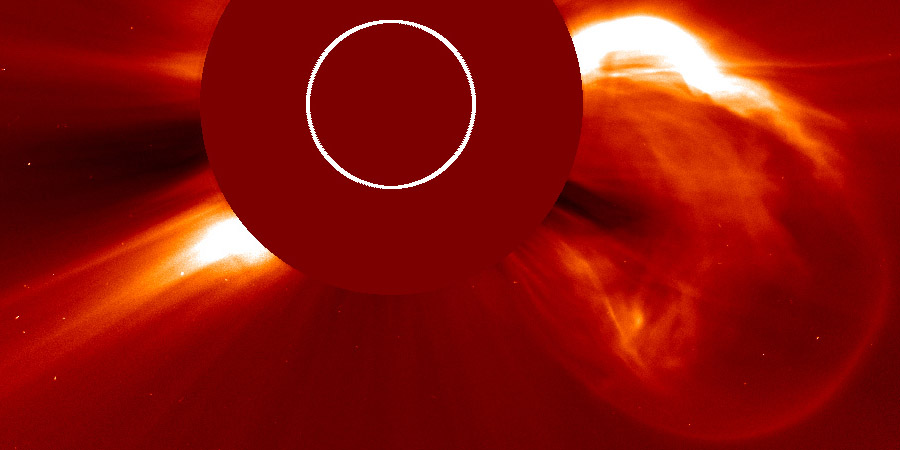Shock passage possible: NOAA G2 watch
Sunday, 3 January 2016 00:52 UTC

The NOAA SWPC issued a moderate G2 geomagnetic storm watch for today as they believe that a shock passage from the M2.3 solar flare might be possible.
In plain English: the core of this coronal mass ejection will miss Earth but this coronal mass ejection was pretty fast at 1657 km/s so it pushes a large shock wave in front of it as the coronal mass ejection plows trough interplanetary space which is filled with ambient solar wind. Think of a snow shovel plowing through the snow and bunching up snow in front of it as it advances. A shock wave could graze Earth this afternoon and cause a brief disturbance.
We must agree here with the NOAA SWPC that a shock passage shouldn't be excluded and a brief enhancement of the solar wind environment around Earth is not totally out of the question. It should however not be an event like during new year that would linger for days. The ACE EPAM protons are elevated which could be due to the effects of the Parker spiral but if it continues to rise in the hours ahead it might indeed signal the approach of an interplanetary shock.
An interesting event well worth following today. Do follow the data live on our website today to see if the shock arrives at Earth.
Thank you for reading this article! Did you have any trouble with the technical terms used in this article? Our help section is the place to be where you can find in-depth articles, a FAQ and a list with common abbreviations. Still puzzled? Just post on our forum where we will help you the best we can!
Latest news
Latest forum messages
Support SpaceWeatherLive.com!
A lot of people come to SpaceWeatherLive to follow the Sun's activity or if there is aurora to be seen, but with more traffic comes higher server costs. Consider a donation if you enjoy SpaceWeatherLive so we can keep the website online!

Space weather facts
| Last X-flare | 2025/03/28 | X1.1 |
| Last M-flare | 2025/03/31 | M1.2 |
| Last geomagnetic storm | 2025/03/27 | Kp5 (G1) |
| Spotless days | |
|---|---|
| Last spotless day | 2022/06/08 |
| Monthly mean Sunspot Number | |
|---|---|
| February 2025 | 154.6 +17.6 |
| Last 30 days | 127.7 -23.5 |


